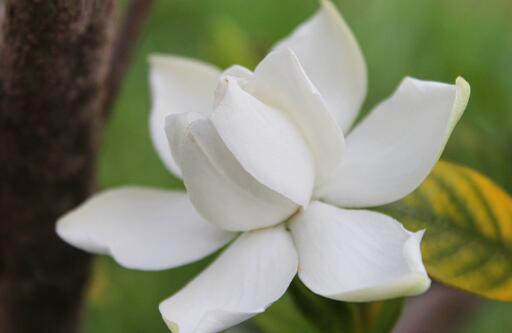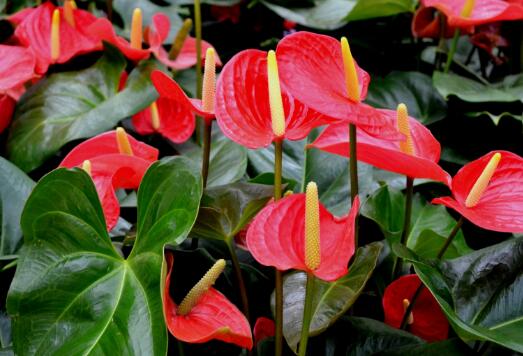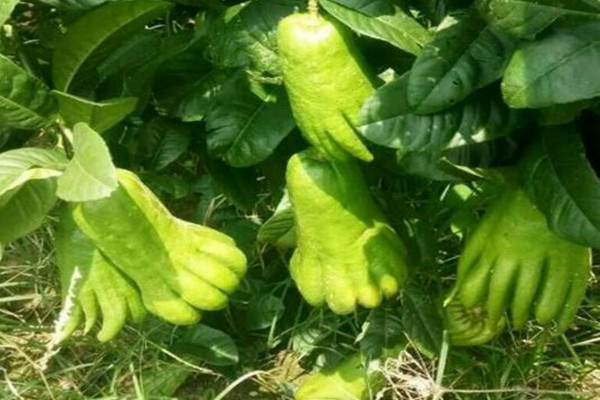"Rubiaceae" is gardenia easy to raise? What if the leaves wilt and turn yellow? What is the reason for not blooming?
Gardenia, also known as gardenia, yellow gardenia, gentian Rubiaceae. Gardenia grows like one in the four seasons, the leaf color is evergreen, the fragrance is elegant when blooming, and the white flowers are white, which is particularly beautiful and very attractive. Is the gardenia easy to raise? What if the leaves turn yellow? What is the reason for not blooming?

Gardenia usually refers to ornamental gardenia variants with double petals. The leather is long oval and shiny. Flowers axillary, shortly pedicellate, fleshy. The fruit is ovate to long oval, with 5-9 winglike straight ribs, 1-loculed, many seeds, embedded in the fleshy placenta. It blossoms from May to July, with beautiful flowers, leaves and fruits, and fragrant flowers. Roots, leaves and fruits can be used as medicine, which has the effect of purging fire and removing annoyance, clearing heat and diuresis, cooling blood and detoxification. Its fruit can be used as paint for painting.
Planting and maintenance of Gardenia jasminoides
First, soil quality: gardenia planting choice of acid soil culture is the best, alkaline soil will make gardenia can not absorb iron very well, which has a great impact on the formation of chlorophyll, further causing flower branches to wither and even die; therefore, the soil must use loose, fertile acid soil, and some substances with such effect can also be added.
Second, the environment
Gardenia is best placed in a place that keeps 60% light a day and fertilizes twice a month after April.
Third, air humidity and watering
Gardenia likes to be wet, so the air can not be too dry, too dry will affect the flowers. If it is too wet, it will lead to rotting roots and yellowing leaves. Therefore, in addition to normal watering, clear water should be often sprayed nearby, and at the same time, the principle of "dry is watered, watered thoroughly" should be adhered to when watering. When you see that the soil is dry, knock on the flowerpot with your hands. If there is an empty sound, you need to water the flowerpot. The bottom of the flowerpot starts to leak and stops, and it is better to add some eggs and soymilk to the watering water, which is more conducive to growth.
Fourth, tips for fertilization
Gardenia likes fertilizer, but it should follow the principle of "thin fertilizer and more fertilizer", otherwise too much fertilizer will cause thick branches, big leaves and thick green, which will lose its own appreciation effect.
Fifth, temperature requirements
The growth temperature of gardenia is 18 to 22 ℃, 5 to 10 ℃ in winter, and frostbite if it is below 10 degrees below zero, which should be paid special attention to in the north.
Sixth, proper pruning
Gardenia should be pruned from time to time to avoid overgrowth and affect beauty. It is best to keep three main branches when pruning, and cut off the roots and tillers to sprout new branches at any time, and the branches should be truncated in time after the flowers are withered, so that new branches will sprout under the cutting mouth. When the new branch grows three nodes, it is necessary to pick the heart so as not to grow blindly.
Seventh, disease prevention
1. Iron deficiency, which is the most common, causes the formation of chlorophyll and then makes the leaves lose their green. Ferrous sulfate water and low concentration of black alum can be used three times a month.
two。 Magnesium deficiency will lead to yellow veins in the lower leaves of Gardenia jasminoides, so it is necessary to spray with low concentration of magnesium sulfate solution.
3. The soil is too wet or too dry. See the third point for this.
4. The sun is exposed to the sun, which can be referred to the second point.
Eighth, breeding methods
There are generally two propagation methods of gardenia: cutting and striping.
1. Cuttings, 15 cm long with twigs in the rainy season, were planted in the seedbed and rooting in 10 Mel for 12 days.
two。 In April, the biennial branches were selected, which were 2O-25 cm long, buried in the soil, kept moist, and were separated from the mother plant in summer and planted in the following spring.
Gardenia leaves wilted how to do?
1, soil reasons: gardenia leaves wilted if the soil should be replaced with nutritious soil, replaced with acidic soil suitable for its growth, and rich in humus.
2, lighting problem: gardenia flowers like light but can no longer be exposed to strong light, sunlight exposure will cause leaves wilting and yellowing, summer should be placed in a semi-shady place to avoid strong light exposure.
3. Watering discomfort: gardenia has higher requirements for water and needs sufficient water. It needs more watering in the afternoon in summer, but the water quality can not be too hard, otherwise it will cause leaves to wilt.
4. Fertilization problem: gardenia can also cause leaf wilting if nutrition can not keep up, but fertilization should be moderate, not too much, and reasonable fertilization should be combined with watering during flower growth.
5, disease and insect harm: gardenia is easy to attract aphids, whitefly, shell insects and other harm, so we should pay attention to pest prevention, regular usage, to avoid leaf damage.
How to do gardenia leaves yellowing?
1, improper watering: gardenia planting process watering too much, then the young leaves will be dull, the old leaves will not be affected, but the leaves will be yellowish green, the new leaves will not grow.
Put the flowers out of the pot in a cool, ventilated place and wait for the soil to dry before putting them back into the basin. When there is lack of water, the tip or edge of the leaf is withered and dry, the old leaf is withered and yellow from the bottom up, and the growth of the new leaf is relatively normal, so it should be fully watered and thoroughly watered.
2. Improper lighting: excessive light leads to macula on the illuminated side of the leaves, which can be restored in a dark place. If the gardenia flower is placed in a shady environment for a long time, then the leaves will turn yellow or fall off because they do not get enough sunlight. It is best to replenish the light immediately.
3, improper fertilization: gardenia planting process should pay attention to fertilization, too much or too much concentration is easy to cause plant yellowing, the new leaf tip will appear brown, the general leaf surface is thick but not glossy, and the concave and convex does not stretch, and the old leaves are scorched yellow. At this time, we should irrigate more and reduce the concentration of soil fertilizer.
Insufficient fertilizer of Gardenia jasminoides can also cause plant yellowing, but the lack of nutrients in the plant is different, the following symptoms are different.
① nitrogen deficiency: plant nitrogen deficiency simple leaves yellowing, new leaves small and brittle.
② potassium deficiency: when plants lack potassium, the old leaves change from green to brown.
③ iron deficiency: at the beginning, the leaves are yellowish or white, the veins are still green, and in severe cases, the veins are also yellow or white, and finally the leaves dry up and die. To this kind of situation, can spray 0.2% Mel 0.5% ferrous sulfate solution to prevent and cure.
④ magnesium deficiency: yellowing gradually develops from old leaves to new leaves, and the veins are still green. In severe cases, the leaves fall off and die. Can be sprayed. 7% one. 8% boron and magnesium fertilizer control.
⑤ phosphorus deficiency: the old leaves are purplish red or dark red.
4. The temperature is too low: too low temperature will also cause leaf yellowing, so we should pay attention to anti-freezing in winter and keep warm at night in early spring and early winter.
5, not ventilated: gardenia growing environment, need to be ventilated and moist, bright light. If you often do not open the window, there will also be signs of yellowing on the edge of the leaf, so remember to open the window every day for ventilation.
The reason why Gardenia does not bloom
1. Water and fertilizer are not suitable
If there is too much water and fertilizer, the plant will grow (grow tall but not strong). Of course, this weak branch will not grow flower bud, resulting in no flowering or few flowering, some of which will bloom or even fall off immediately. In the period of flower bud differentiation, special attention should be paid to the collocation of phosphorus and potassium fertilizer, such as 0.2% potassium dihydrogen phosphate solution, which is conducive to flower bud formation and bud pregnancy; excessive fertilization and watering during the bud period will also cause falling flowers and seedlings.
2. Improper lighting
Gardenia is a shade-loving plant, occasionally see light, summer shade, winter can give appropriate light, too strong and weak light will affect the flowering of gardenia.
3. High alkali content in soil.
Gardenia likes slightly acidic soil, basin soil contains high salt and alkali, the plant leaves will turn yellow, affecting flowering.
4. Too tight without pruning
Gardenia jasminoides branches disorderly, a large number of miscellaneous branches consume a lot of nutrients and branches are too dense, affecting photosynthesis, are the important reasons for not blooming.
Time: 2019-04-10 Click:
- Prev

"Araceae" Anthurium cultivation methods and matters needing attention! Is it poisonous? How do the leaves turn yellow and scorched?
Anthurium, also known as fire crane flower, candle, because of its broad green leaves, stamens such as Buddha flame, petals red like fire, full of auspicious and festive meaning, so deeply loved by everyone. How to raise Anthurium andraeanum? Now let's introduce the culture methods and points for attention of Anthurium andraeanum: Anthurium andraeanum Araceae perennial evergreen herbs.
- Next

How many catties of chayote per mu? What are the costs and benefits of planting?
Chayote is also called harvest melon, cucumber, melon, fruit, tender stems and leaves, tendrils, underground roots can be made dishes, is a veritable pollution-free vegetables. It is loved by many people and many farmers compete to plant it. So, how many catties of chayote per mu? What are the costs and benefits of planting? How many pounds per mu of chayote
Related
- Fuxing push coffee new agricultural production and marketing class: lack of small-scale processing plants
- Jujube rice field leisure farm deep ploughing Yilan for five years to create a space for organic food and play
- Nongyu Farm-A trial of organic papaya for brave women with advanced technology
- Four points for attention in the prevention and control of diseases and insect pests of edible fungi
- How to add nutrient solution to Edible Fungi
- Is there any good way to control edible fungus mites?
- Open Inoculation Technology of Edible Fungi
- Is there any clever way to use fertilizer for edible fungus in winter?
- What agents are used to kill the pathogens of edible fungi in the mushroom shed?
- Rapid drying of Edible Fungi

